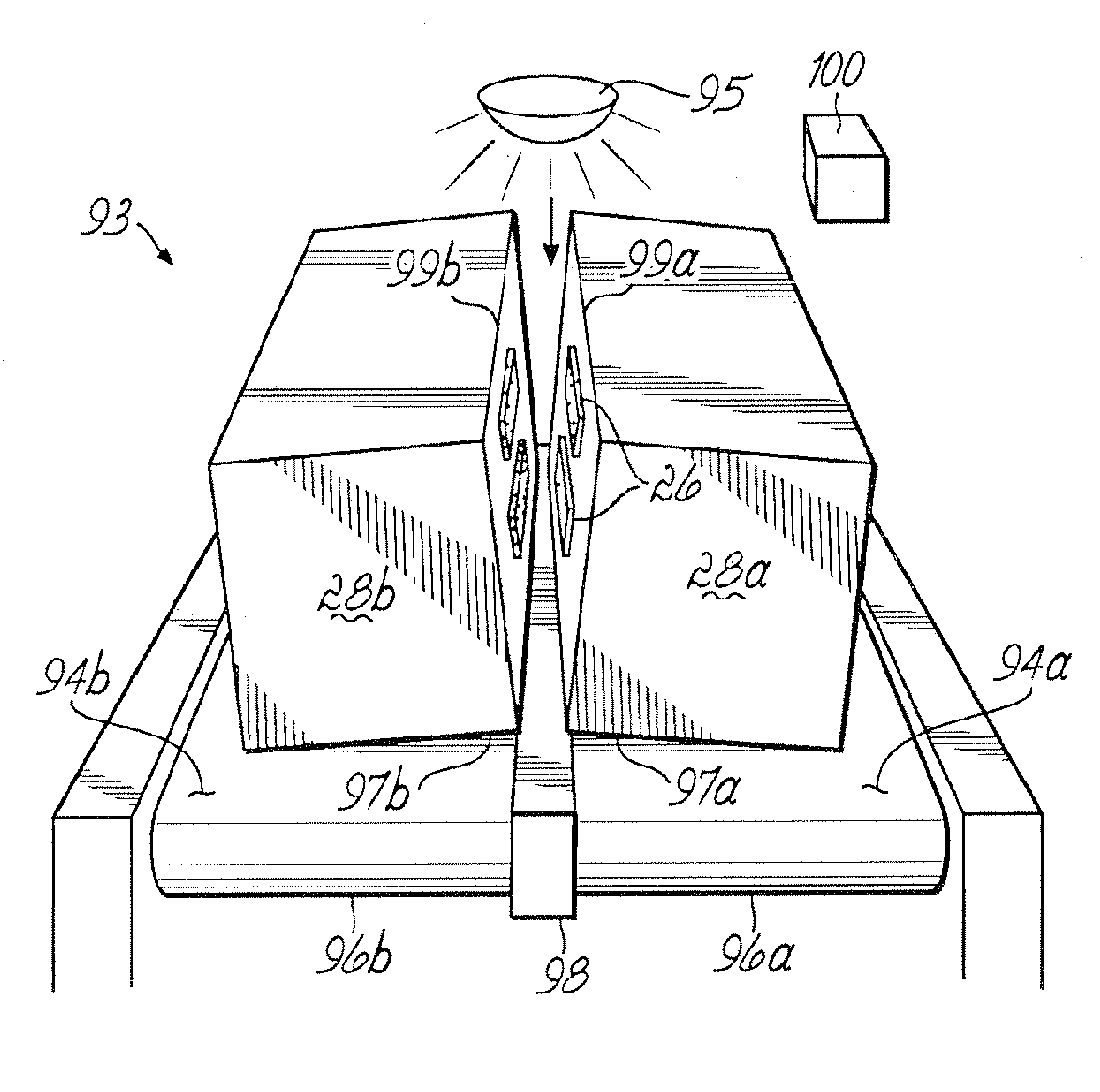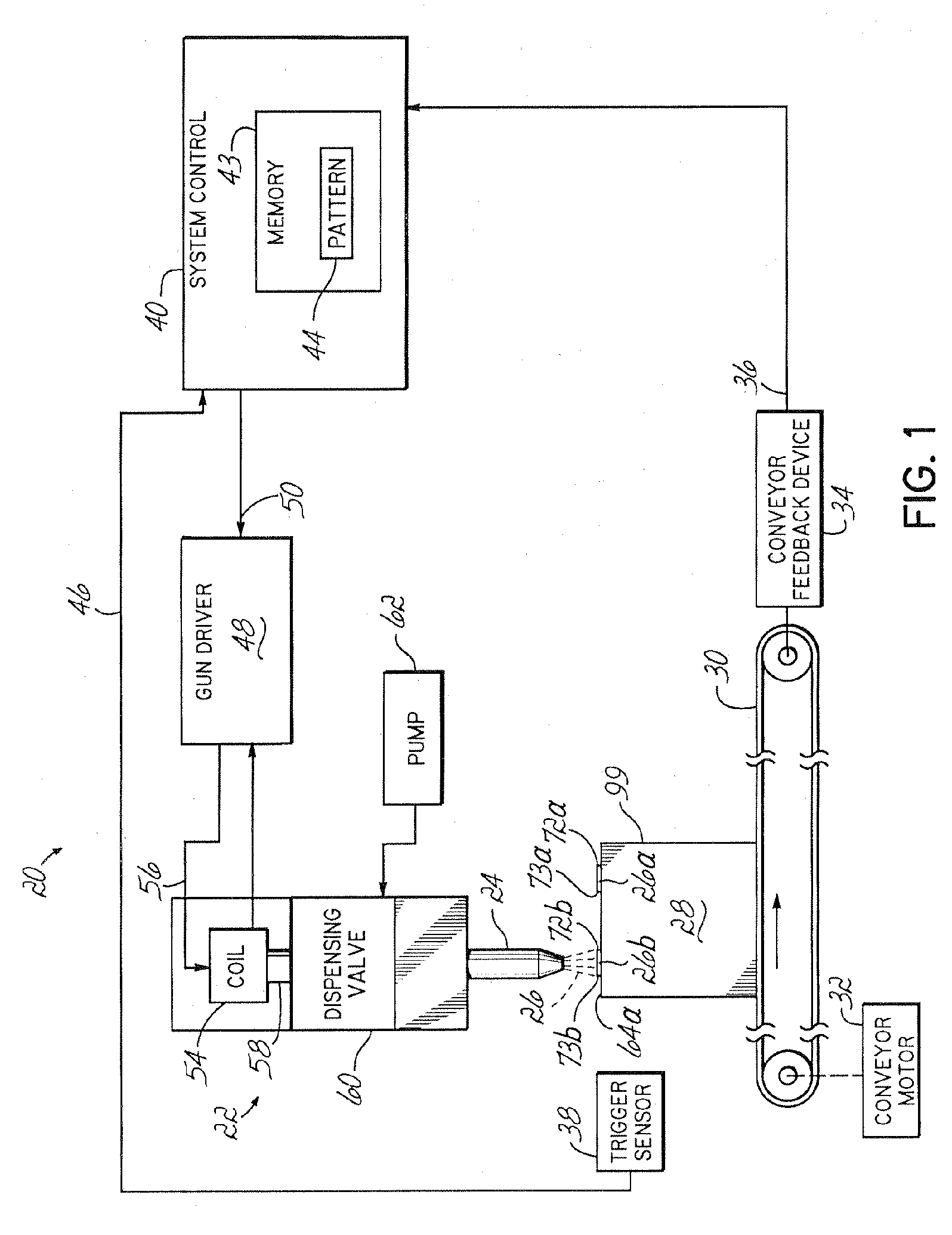Method for dispensing an energy reactive adhesive
a technology dispensing methods, which is applied in the direction of adhesive processes, packaging, lamination ancillary operations, etc., can solve the problems of adhesive placement, conventional adhesives may damage the package surface upon separation, and subsequent de-unitization of substrates, so as to reduce the temporary bonding characteristics of light reactive adhesives, the ability of energy reactive adhesives to be exposed, and the effect of reducing the bonding capacity
- Summary
- Abstract
- Description
- Claims
- Application Information
AI Technical Summary
Benefits of technology
Problems solved by technology
Method used
Image
Examples
Embodiment Construction
[0012]FIG. 1 shows a block diagram of a fluid dispensing system 20 configured to facilitate unitization by applying an energy reactive bonding agent, or adhesive 26, to cartons or other substrate surfaces 64a. A suitable energy reactive adhesive 26 comprises a material whose bonding properties, e.g., tackiness, are reduced when exposed to a source that radiates energy in one or more spectrums of the electromagnetic spectrum, excluding infrared radiation, i.e., heat. For instance, the energy reactive adhesive 26 typically comprises a thermoplastic material that is tacky under ambient conditions and that becomes brittle when subject to a radiating energy source. That is, the tackiness of the energy reactive adhesive 26 is reduced when exposed to the source that radiates energy. In one preferred embodiment, the radiating energy source includes an ultraviolet light source.
[0013] The system 20 applies the energy reactive adhesive 26 on and / or between substrate surfaces, and upon setting...
PUM
| Property | Measurement | Unit |
|---|---|---|
| Wavelength | aaaaa | aaaaa |
| Temperature | aaaaa | aaaaa |
| Energy | aaaaa | aaaaa |
Abstract
Description
Claims
Application Information
 Login to View More
Login to View More - R&D
- Intellectual Property
- Life Sciences
- Materials
- Tech Scout
- Unparalleled Data Quality
- Higher Quality Content
- 60% Fewer Hallucinations
Browse by: Latest US Patents, China's latest patents, Technical Efficacy Thesaurus, Application Domain, Technology Topic, Popular Technical Reports.
© 2025 PatSnap. All rights reserved.Legal|Privacy policy|Modern Slavery Act Transparency Statement|Sitemap|About US| Contact US: help@patsnap.com



